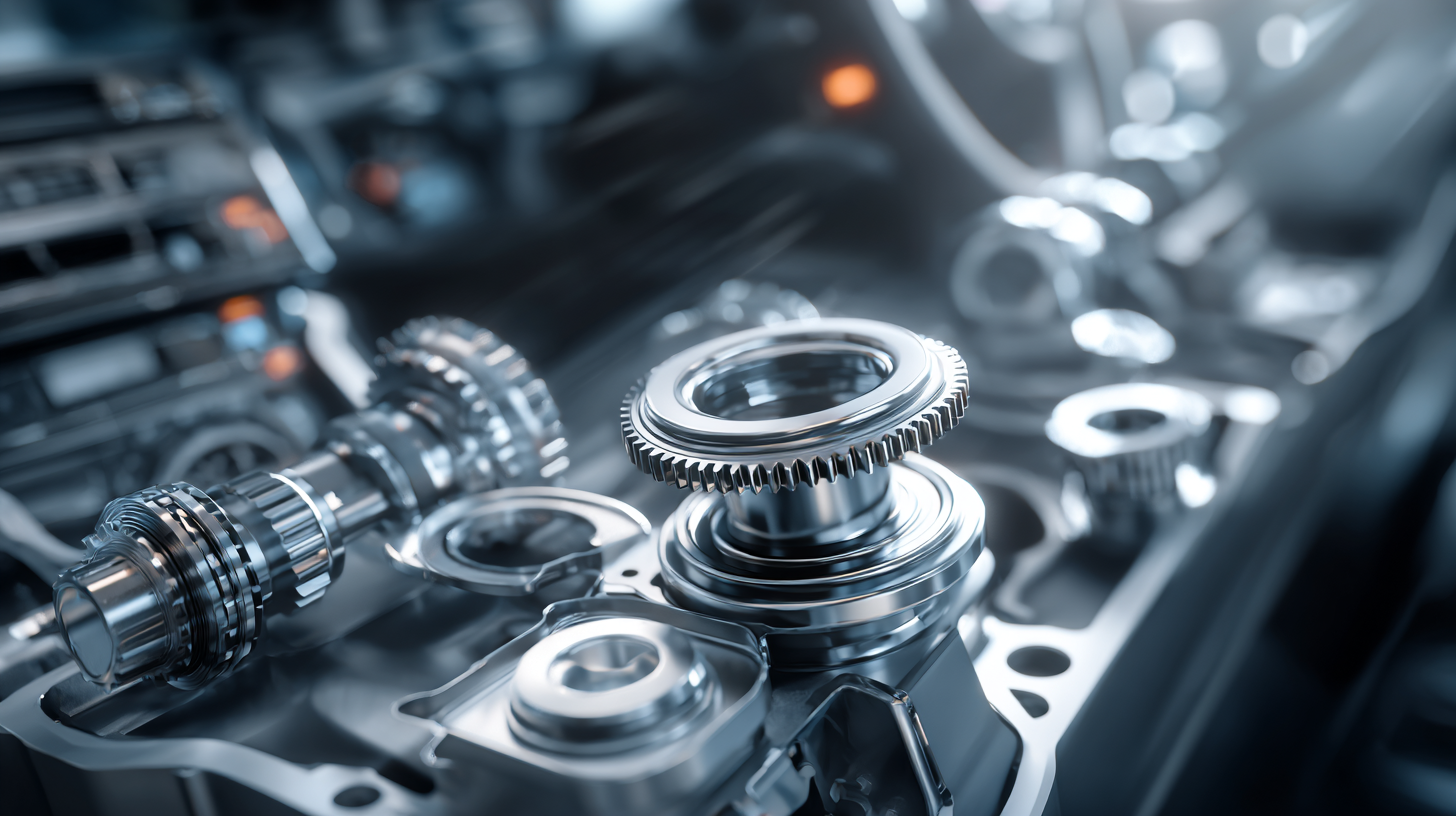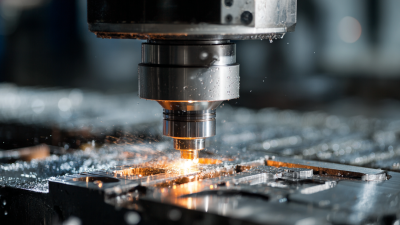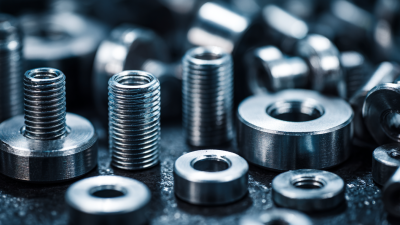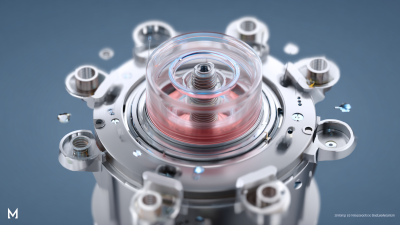The automotive industry has witnessed a significant transformation over the past few years, particularly in the domain of Automotive Specialty Parts. These components are designed to enhance vehicle performance and safety beyond standard factory settings, making them increasingly popular among enthusiasts and everyday drivers alike. According to a report by the Specialty Equipment Market Association (SEMA), the automotive specialty parts market is projected to reach over $47 billion by 2025, reflecting a growing trend in customized vehicle modifications.

Renowned industry expert Dr. Jennifer Lane, an authority on automotive engineering, emphasizes the critical role that these specialized components play in modern vehicles. She states, "The integration of high-performance parts not only bolsters the mechanical capabilities of a vehicle but also enhances the overall driving experience, proving that the right modifications can significantly impact performance and safety." As demand for customization escalates, understanding the implications of Automotive Specialty Parts becomes essential, guiding consumers toward informed decisions that could affect their vehicle’s performance and safety on the road.
With a myriad of options available in the market, both consumers and manufacturers are tasked with navigating the intricate balance between performance enhancements and safety standards. This article delves into the myriad ways in which Automotive Specialty Parts influence vehicle dynamics and driver security, shedding light on critical considerations for anyone looking to optimize their automotive experience.
 Automotive specialty parts have a significant role in enhancing vehicle performance and safety. These components, designed with cutting-edge technology, not only improve efficiency but also optimize overall driving dynamics. As the industry advances, there is increasing focus on specialized parts that cater to electric and hybrid vehicles, capitalizing on technological innovations such as lightweight materials and advanced manufacturing techniques. This focus not only leads to better fuel economy and reduced emissions but also ensures that vehicles can meet stricter safety standards.
Automotive specialty parts have a significant role in enhancing vehicle performance and safety. These components, designed with cutting-edge technology, not only improve efficiency but also optimize overall driving dynamics. As the industry advances, there is increasing focus on specialized parts that cater to electric and hybrid vehicles, capitalizing on technological innovations such as lightweight materials and advanced manufacturing techniques. This focus not only leads to better fuel economy and reduced emissions but also ensures that vehicles can meet stricter safety standards.
The growth of the automotive specialty parts market is also driven by sustainability goals and the demand for greener manufacturing processes. As consumers become more environmentally conscious, manufacturers are responding by integrating eco-friendly practices in production. Innovations in metal forging and automation enable companies to produce specialty parts that are not only high-performing but also more sustainable. In addition, the continuous evolution of market trends, including the rise of electric vehicles and the growing aftermarket industry, positions automotive specialty parts as crucial elements in the modern automotive landscape, contributing to both enhanced performance and greater safety for drivers and passengers alike.
The integration of lightweight materials in automotive specialty parts has become a pivotal development in enhancing vehicle speed and handling. Materials such as carbon fiber, aluminum alloys, and advanced composites significantly reduce the overall weight of a vehicle, which directly correlates to improved acceleration and braking performance. By minimizing mass, these materials allow for more efficient power-to-weight ratios, enabling engines to perform optimally without excessive strain. This reduction in weight not only enhances speed but also contributes to better fuel efficiency and lower emissions, aligning with modern automotive sustainability goals.
In addition to speed, lightweight materials play a crucial role in refining vehicle handling dynamics. With a lower center of gravity and reduced inertia, vehicles can navigate corners with greater agility and stability. This improvement in handling is particularly significant in high-performance and sports vehicles where precision is paramount. Moreover, lightweight components can enhance suspension responsiveness, allowing for a more comfortable and controlled driving experience. Consequently, the use of lightweight materials in specialty automotive parts not only elevates performance standards but also heightens safety by fostering a more predictable and controlled vehicle behavior on the road.
Upgraded brake systems and components play a crucial role in enhancing both vehicle performance and safety. By replacing stock brake parts with high-performance alternatives, drivers can experience shorter stopping distances, better heat dissipation, and improved pedal feel. This is particularly beneficial in emergency situations where swift response times are critical. High-performance brake pads, rotors, and calipers can significantly reduce the risk of brake fade during intense driving conditions, thus ensuring consistent and reliable braking.
Tips for enhancing your brake system include choosing components that match your driving style. For instance, if you frequently drive in high-performance situations, consider investing in ceramic brake pads that provide better stopping power. Regular maintenance is also essential; ensure that you inspect and replace worn-out components proactively to avoid potential safety issues.
Another aspect to consider is the compatibility of your upgraded parts with existing systems. It's vital to consult with a professional when selecting parts to ensure they are suited for your vehicle's make and model. Proper installation cannot be overlooked, as even the best components will underperform if not fitted correctly. By prioritizing these factors, you can maximize the safety benefits of your upgraded brake system.
Custom suspension systems play a crucial role in enhancing ride comfort and stability for automotive vehicles. By allowing for precise tuning of the suspension components, these systems enable adjustments in shock absorption and spring rates tailored to specific driving conditions. This customization reduces the transmission of road imperfections to the cabin, resulting in a smoother ride for passengers. Additionally, a well-designed suspension keeps the vehicle's tires in optimal contact with the road, improving traction and handling.
 Moreover, the stability provided by custom suspension systems is essential for both performance driving and everyday commuting. Enhanced stability translates into better cornering abilities and reduced body roll during turns, which ultimately contributes to safer driving experiences. Drivers can feel more confident pushing their vehicles to the limits, knowing that the suspension has been engineered to maintain balance and control. In this way, custom suspension systems not only elevate driving pleasure but also play a vital role in the overall safety of the vehicle.
Moreover, the stability provided by custom suspension systems is essential for both performance driving and everyday commuting. Enhanced stability translates into better cornering abilities and reduced body roll during turns, which ultimately contributes to safer driving experiences. Drivers can feel more confident pushing their vehicles to the limits, knowing that the suspension has been engineered to maintain balance and control. In this way, custom suspension systems not only elevate driving pleasure but also play a vital role in the overall safety of the vehicle.
The integration of advanced technology in automotive specialty parts has revolutionized vehicle safety features, significantly enhancing overall performance. These specialty components, which include high-performance brakes, suspension systems, and safety electronics, are designed with cutting-edge technology that addresses the specific demands of modern driving environments. For instance, brake systems now frequently incorporate materials such as carbon-ceramic to provide better heat dissipation and stopping power, thus reducing the likelihood of brake fade during intense driving scenarios.
Moreover, the application of smart technologies, such as sensors and embedded systems, allows for real-time monitoring and adjustments, elevating the vehicle's safety to unprecedented levels. Specialty parts can now communicate with a vehicle's onboard computer to optimize functionality based on driving conditions. This capability not only enhances performance but also actively assists in preventing accidents, such as through adaptive suspension systems that automatically adjust to road imperfections or active safety systems that can detect obstacles and initiate emergency braking. As these technologies continue to evolve, the role of automotive specialty parts in ensuring safer and more efficient vehicles will be critical.






